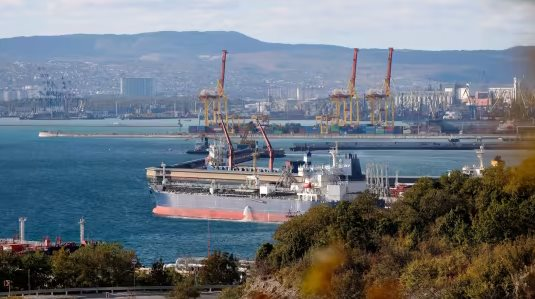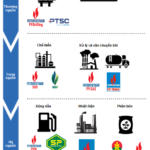
Illustration
On November 15, Russia announced it would suspend gas transit via Ukraine to Austria, signaling the end of the last remaining gas flow from Moscow to Europe. This was Russia’s oldest gas export route to the continent.
Moscow’s decision to halt gas supplies to Austria, the main recipient of gas transited via Ukraine, means Russia will now only supply gas to Hungary and Slovakia. In comparison, Russia previously met 40% of the EU’s gas demand before the conflict with Ukraine.
According to data compiled by Oilprice, Russia transported approximately 15 billion cubic meters of gas through the Ukrainian pipeline in 2023, accounting for just 8% of Russia’s peak gas deliveries to Europe through various routes in 2018-2019.
Also, in 2023, the transit route via Ukraine met 65% of Austria’s gas demand and its eastern neighbors, Hungary and Slovakia. Ukraine stated it had no plans to extend this agreement until 2025 in an effort to hinder Russia from generating energy revenue to fund its military operations.
Austria’s largest energy supplier stated it was prepared for the cessation of Russian gas supplies and could provide for its customers by importing gas from Germany, Italy, and the Netherlands.
In the latest development, Russia is eyeing a new gas route to China, betting big on the growing demand in this Asian nation. Specifically, it is the pipeline through Kazakhstan, capable of supplying up to 35 billion cubic meters of natural gas annually.
Announced by Deputy Prime Minister Alexander Novak, this plan emerges as Moscow increasingly turns towards Beijing, having already shipped 40 billion cubic meters of gas to the Asian giant this year. With Europe now out of the picture, China is the Kremlin’s top energy client, even though gas accounts for only 2.8% of Beijing’s total energy mix.
China favors gas, and its demand is rising. Domestic consumption increased by 8.8% in the first eight months, reaching 283 billion cubic meters, driven by urban heating systems, industry, and efforts to replace diesel trucks with LNG. By 2040, China’s natural gas demand is expected to grow by over 50%.
For Moscow, this pipeline will be a savior in its attempts to solidify ties with Beijing and fill the revenue void left by Europe. China’s gas hunger is driving Russia’s moves as it embarks on long-term imports, forecasting that Russia will need to continue offering discounted gas prices to attract Chinese customers, similar to what it has done with oil.
According to Oilprice
China Tightens Control on Exports of a Vital Metal: Dominating 80% of the Market Share, Vietnam Also Possesses the Third-Largest Reserve Globally
China is tightening its grip on exports of a range of goods, including tungsten, magnesium, and graphite, which are commonly used in technology supply chains. The move is part of a broader strategy by the Chinese government to exert greater control over critical resources and could have significant implications for global trade and technology industries.
“Investing in Vietnam: Access to 65 of the World’s Top Markets”
On the morning of November 8th, Prime Minister Pham Minh Chinh attended a Vietnam-China business forum in Chongqing city. The forum was organized by the Ministry of Planning and Investment, the Committee for Management of State Capital at Enterprises, and the Vietnamese Embassy in China, in collaboration with the Chongqing municipal government.
Innovating and Collaborating for a Dynamic, Sustainable, and Prosperous Greater Mekong Sub-Region
On the evening of November 8, Prime Minister Pham Minh Chinh and the high-ranking delegation of Vietnam arrived in Hanoi, concluding their work trip to attend the 8th Mekong Subregion – Greater Mekong Subregion (GMS) Summit, the 10th Ayeyawady – Chao Phraya – Mekong Economic Cooperation Strategy (ACMECS) Summit, the 11th Cambodia – Laos – Myanmar – Vietnam (CLMV) Summit, and their official visit to China from November 5 to 8.
PLX – A Fair Valuation Stock for Long-Term Investors
As the leading retailer in the Vietnamese petroleum industry, Petrolimex (HOSE: PLX) is an attractive prospect for investors seeking long-term opportunities. The stock is currently trading at a reasonable price, as indicated by our valuation metrics, making it a compelling option for those looking to diversify their portfolios.





















